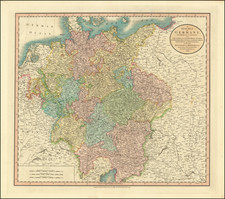Antique hand-colored engraved map of the region around Frankfurt-am-Main, published by Johann Baptist Homann in Nuremberg around 1720.
The map extends from Hochst on the left to Neu and Alt Hanau on the right. Frankfurt and Saxenhausen are shown at the center.
The map exemplifies the 18th-century German urban mapping of the time, which usually called for a general map at the top of the sheet, and a bird's-eye view of the city in the bottom quarter or third of the sheet. In this case, the view of Frankfurt is augmented with additional decorative insets showing the economic and ecclesiastical importance of the city.
Johann Baptist Homann (1663-1724) was a mapmaker who founded the famous Homann Heirs publishing company. He lived his entire life in Bavaria, particularly in Nuremberg. Initially, Johann trained to become a priest before converting to Protestantism and working as a notary.
In 1702, Johann founded a publishing house that specialized in engravings. The firm flourished, becoming the leading map publisher in Germany and an important entity in the European map market. In 1715, Johann was named Imperial Geographer to the Holy Roman Empire by Charles VI and made a member of the Prussian Academy of Sciences. Most importantly for his business, his reputation and contacts gained him imperial printing privileges which protected his publications and recommended him to customers. Johann is best known for this Grosser Atlas ueber die ganze Welt, or the Grand Atlas of the World, published in 1716.
After Johann died in 1724, the business passed to his son, Christoph (1703-1730). Upon Christoph’s early death, the company passed to subsequent heirs, with the name of the company changing to Homann Erben, or Homann Heirs. The firm continued in business until 1848.









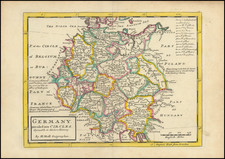
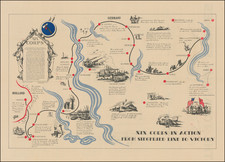
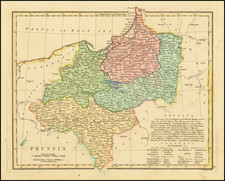
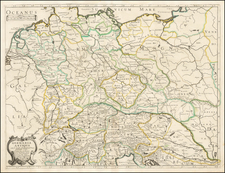
![[12 Folding Maps From the Library of the House of Bourbon-Orléans in Two Custom Red Morocco Boxes]](https://storage.googleapis.com/raremaps/img/small/99209.jpg)
